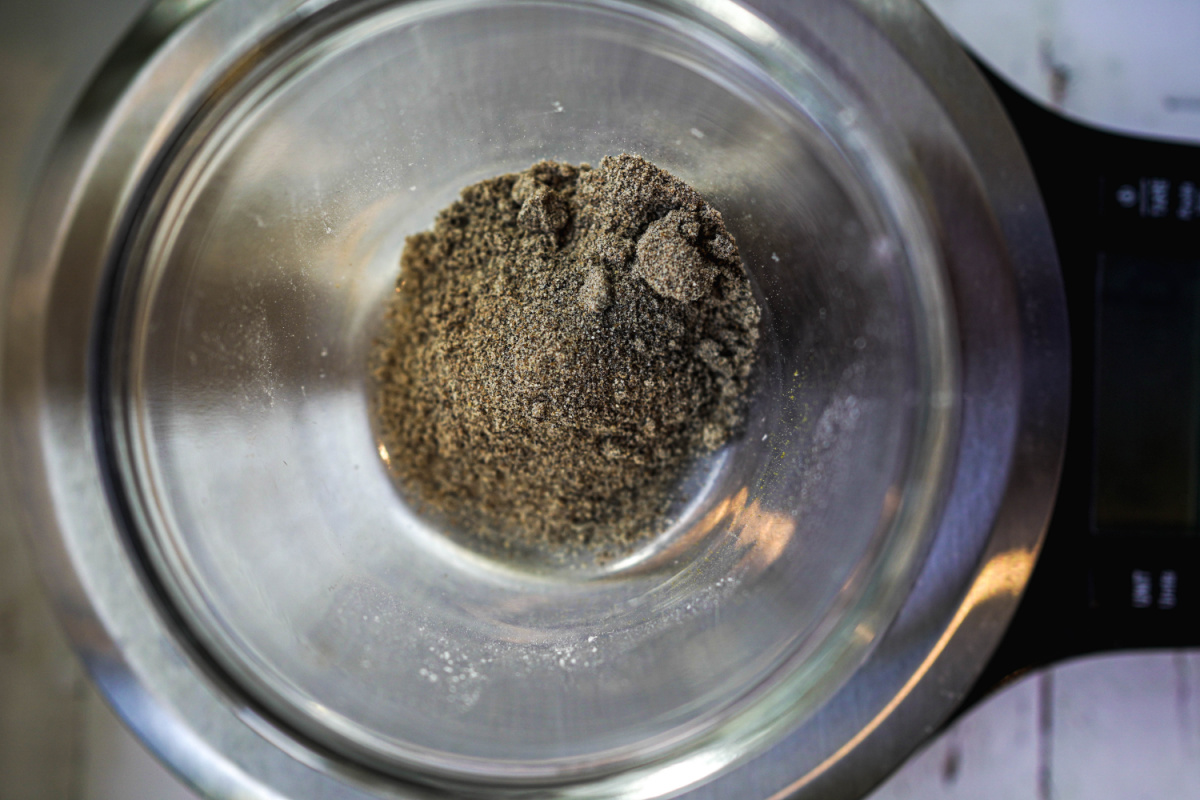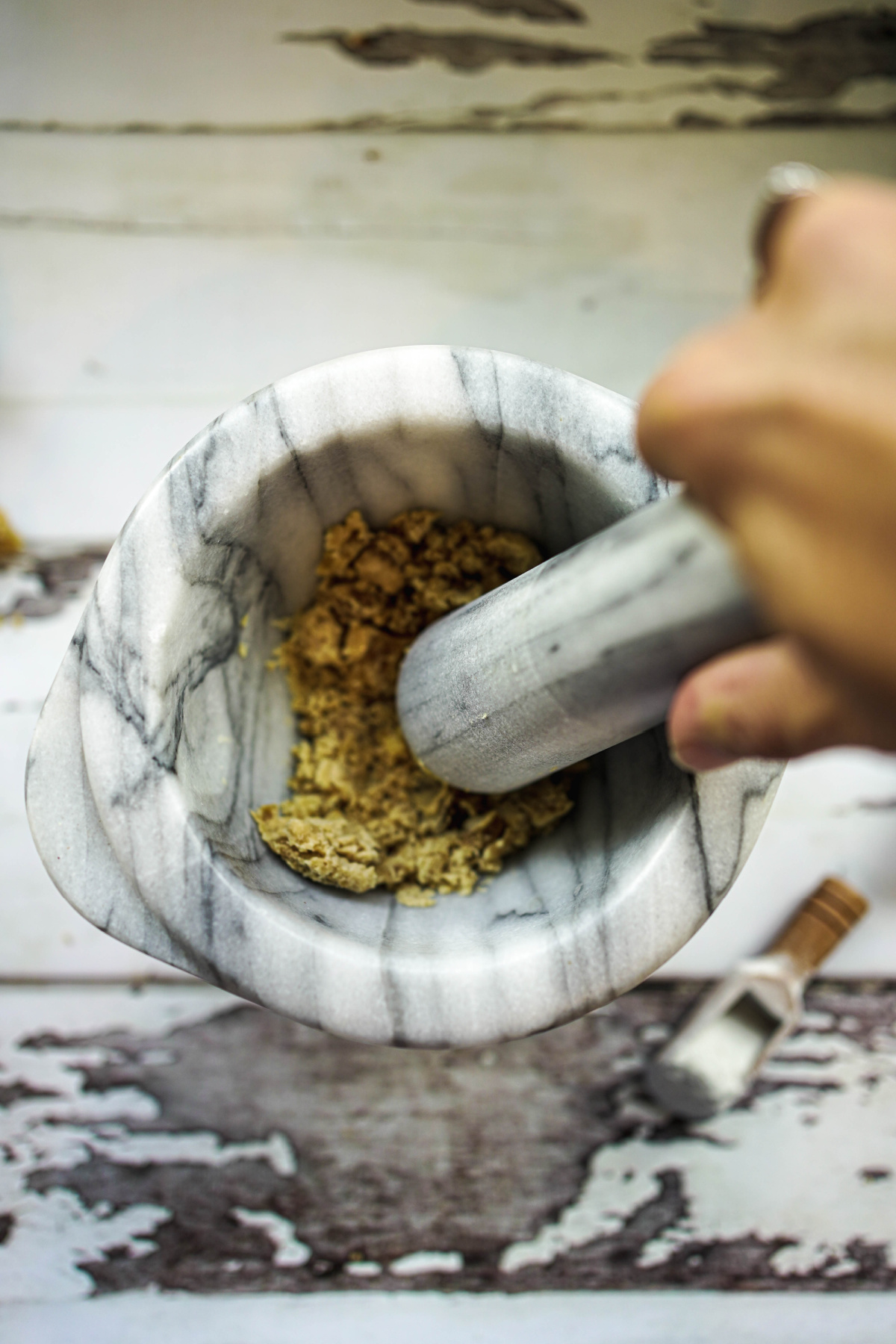
Sitopaladi Churna: Sweet Cough Powder for Respiratory Support
With spring in full swing, consider yourself fortunate if you are not affected by seasonal allergies or other respiratory issues. On the other hand, if you do experience sneezing, wheezing, coughing, and other respiratory allergy symptoms, you may find yourself looking for new methods of respiratory support. Or, perhaps you simply want to have some dependable herbal allies on hand in case of the occasional cough or cold. Sitopaladi churna is a classical ayurvedic formula that offers respiratory support for colds, coughs, and seasonal allergies.
Respiratory Support And Allergies: The Big Picture
Since Ayurveda is a holistic system, one always takes into account the big picture view before suggesting targeted herbs or herbal formulas to an individual. In this post, I will not explain the underlying causes of seasonal allergies in great depth. However, you may want to read my Herbal Academy post, Herbal Allergy Support Using Ayurvedic Herbs, for insight into the broader ayurvedic view on allergies, as well as some specific herbal supports.
Without going into great depth, it is important to remember that in Ayurveda, everything begins in the gut and in the mind. When digestion goes awry, other problems will inevitably ensue. Similarly, the mind is the subtle root of illness, and psychological burdens will ultimately have ripple effects if left unresolved. That said, balancing digestion and taking measures to unburden excess stress are foundational for any wellness protocol. However, in addition to diet and lifestyle, sometimes we need to call upon extra support, particularly during acute symptom flare-ups. Also, no matter how healthy our lifestyle, most of us come down with a cold virus every now and then. This is where sitopaladi churna comes in.

Sitopaladi Churna: The Sweet Cough Powder
Sitopaladi churna offers much more than a sweet taste. Let’s take a look at what’s inside!
50 grams sitopala (rock candy)* *Use either a raw sugar of choice or jaggery, a type of cane sugar commonly found in Indian markets.
Evenly mix all ingredients and store out of direct sunlight. This formula yields 100 grams.
Sitopaladi Churna: Sweet Cough Powder
Sitopaladi churna is a relatively simple ayurvedic formula with a number of usages. It contains a fair amount of rock sugar, hence the nickname “sweet cough powder” or the literal translation “sugar, etc.” (Pole, 2013).
25 grams vamsa rochana (Bambusa arundinacae) powder
13 grams pippali (Piper longum) fruit powder
7 grams cardamom (Elettaria cardamomum) seed powder
5 grams cinnamon (Cinnamomum verum, syn. C. zeylanicum) bark powder
Dosage
1-3 grams 2-3x/day (Dass, 2013). Take in hot water. Optionally, add 1/2 teaspoon of honey for additional cough, cold, and allergy support (Pole, 2013).
Usages
Sitopaladi churna is indicated for cough, sore throat, asthma, fever, sinus infections, bronchitis, and chest congestion (Dass, 2013; Pole, 2013). It is also indicated for allergies triggered by dust, mold, and airborne allergens, as well as for coughs with large amounts of phlegm (Pole, 2013).
As with many classical ayurvedic formulas, you may see some variation in terms of the ratio of the herbs from one product maker to the next. However, all things considered, this is a relatively simple formula and the basic ingredients stay the same. That said, if it feels like a hassle to track down and then measure and mix these five ingredients, sitopaladi churna is readily available from ayurvedic product suppliers. So, you can order it ready-made if that makes life a little easier.

What’s In It!? In Greater Detail…
Now that you know what goes into sitopaladi churna, let’s take a deeper dive into the energetics and usages for each ingredient so you can better understand why sitopaladi is a tried and true ayurvedic favorite.
Vamsa Rochana (Bambusa arundinaceae) – “Bamboo Manna”
Also sometimes referred to as “vamsa lochana,” this is the inner pith of a type of clumping bamboo that grows in South Asia (Pole, 2013). Vamsa rochana has a sweet and astringent taste, a cool energy, and an overall nutritive effect (Frawley & Lad, 2001). It is used as a demulcent, expectorant, tonic, antispasmodic, and rejuvenative (Frawley & Lad, 2001). Given these properties, it is easy to see why this herb is included in a formula to soothe coughs, colds, and allergies.
Vamsa rochana is balancing for all three doshas. However, due to its sweet, cool, and nutritive attributes, it can aggravate kapha dosha if taken in excess. Perhaps of interest to the herbal enthusiast, though sitopaladi churna calls for the inner pith of the bamboo bark, the leaves of this plant may also be used to encourage healthy menstrual flow and to clear excess heat and inflammation from the lungs (Pole, 2013).

Pippali (Piper Longum) – Long Pepper
Pippali, also called long pepper or Indian long pepper, adds some heat to sitopaladi churna. This pungent pepper is interesting in that it is heating, yet produces an overall nourishing effect (Dass, 2013). When herbs have an overall nourishing effect, they are referred to in Ayurveda as having a “sweet post-digestive effect” or “sweet vipaka.” Pippali also possesses a moist quality, making it different from black pepper (Piper nigrum) and ginger (Zingiber officinale), which have a drying effect. This makes it helpful for conditions where there is overall weakness, depletion, and dry tissues. Pippali is used to soothe common coughs, colds, and congestion, and may be helpful for degenerative lung conditions (Dass, 2013).

Cardamom (Elettaria cardamomum)
What is not to love about cardamom? This aromatic seed is delicious in chai and baked goods, and even makes a great ice cream topping! (Vanilla ice cream and cardamom…yes!) In fact, cardamom is well suited to complement dairy and heavy foods, as it is an effective carminative and gently stimulates digestion without overheating pitta dosha (though those with a pitta imbalance or a very warm constitution should use caution as cardamom can aggravate pitta dosha if taken in excess) (Dass, 2013). Cardamom has a sweet and pungent taste, a heating energy, and an overall purifying effect on the body. It is also considered sattvic, meaning that it is clearing and purifying for the mind (Dass, 2013).
Beyond its usage as a culinary spice and digestive herb, cardamom also removes excess kapha dosha from the lungs and stomach (Frawley & Lad, 2001). Kapha dosha in the stomach and lungs may be experienced as excess phlegm, sluggish digestion, trouble breathing, and overall heaviness. Also, this tasty spice helps reduce excess mucous produced from consuming dairy—yet another reason to pair it with sweets, dairy, and heavy foods (Frawley & Lad, 2001).
Cardamom is indicated for a number of conditions, including colds, coughs, asthma, bronchitis, and indigestion (Frawley & Lad, 2001). Given these indications, it makes sense that it is a key ingredient in sitopaladi churna.

Cinnamon (Cinnamomum verum, syn. C. zeylanicum)
Sitopaladi churna contains not one but two delicious aromatic spices. Cinnamon, another household favorite, has a pungent, sweet, and astringent taste, a heating energy, and an overall nutritive effect. In addition to supporting circulation, cinnamon is a diaphoretic and expectorant. Due to its warming energy, this tasty spice is best suited for those with a vata or kapha constitution (Frawley & Lad, 2001). However, its sweetness and moistness soften the heat, so it may be used for pitta individuals with caution around not causing excess heat.
Cinnamon, like cardamom, is quite versatile—its indications include colds, coughs, flu, sinus congestion, wheezing, indigestion, chronic diarrhea, and poor circulation (Dass, 2013).

Sitopala – Sugar
According to Ayurveda, the sweet taste is nutritive and pacifies vata and kapha doshas. Of course, sugar can be overdone, but a bit of sweetness makes this herbal formula more palatable and similar to a food substance. A senior ayurvedic doctor in India once explained to me that sometimes when herbs are taken in or with a bit of food, the body receives them better. In this formula, the sweetness provided by sugar adds to the demulcent properties of the blend (Pole, 2013).

In Closing,
Though each ingredient in sitopaladi churna has its own benefits, when combined together, the result is greater than the sum of its parts. The five ingredients come together to make a formula that is pleasing to the tongue, aromatic, and revered for its effectiveness in soothing coughs, colds, congestion, and seasonal allergies. Sitopaladi churna has a sweet and pungent (hot) taste, a warm energy, and an overall nutritive effect (Pole, 2013). It sparks the digestive fire, helps reduce burning sensations, and serves as a diaphoretic and bronchodilator (Pole, 2013). Whether you mix up a batch yourself or buy some ready-made, sitopaladi churna may become a new household favorite for allergy and cold season!

REFERENCES
Dass, V. (2013). Ayurvedic herbology: East & West. Lotus Press.
Frawley, D. & Lad, V. (2001). The yoga of herbs (2nd ed.). Lotus Press.
Pole, S. (2013). Ayurvedic medicine: The principles of traditional practice. Singing Dragon.








